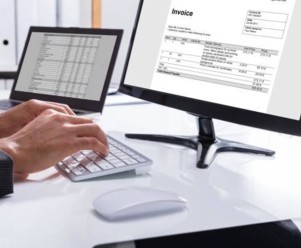Digital vs Paper Pay Stubs for Businesses
By Davis Clarkson , February 19 2025

Nowadays, most businesses have to make major choices regarding improving their systems. One of the areas that has registered a drastic change in the past few years is payroll management. This is most obvious with pay stubs, which have recently shifted to electronic forms. Businesses need to understand these new systems so they can adapt accordingly.
This article discusses digital vs paper pay stubs for businesses. By the end, you’ll be able to make the right choice for your company’s payroll.
What Is Digital vs Paper Pay Stubs for Businesses?
Digital pay stubs can be described as modern forms of traditional paper pay stubs. Employees have access to their pay stubs online. Paper pay stubs need to be provided in physical form to the recipient. After receipt, they are stored and preserved. Electronic pay stubs are in digital formats and retrievable on different devices.
Digital vs Paper Pay Stubs for Businesses Comparison
Let’s compare digital vs paper pay stubs for businesses:
Cost
Choosing digital vs paper pay stubs for business has some financial consequences. Paper systems may appear to be cheaper in the first few years. However, this may change in the long run. Traditional paper pay stubs incur regular costs for printing, paper and envelopes. The costs for postage and storage space aren’t left out either. In addition, the payroll department spends money on preparing the hardcopy pay stub. There’s also the cost of physically delivering it to the employees.
For digital systems, you may have to invest money to purchase software or pay subscriptions at first. However, the cost is reduced over time compared to paper pay stubs. Some industry statistics reveal that companies can save money every payroll run using technology. This is important for developing organizations with rising employee headcounts.
Accessibility and Convenience
Digital pay stubs make it easy for employees to access their payroll data. They can check anytime and anywhere in the world via the Internet. Mobile devices like tablets or smartphones make this even better. This means employers may not need to store paper copies. Employees also do not risk losing their pay stubs and having to request a replacement.
However, some employees prefer having paper pay stubs. Sometimes, this is due to the availability of home internet for those individuals. During the transition, some businesses choose a hybrid model. They use both paper and electronic methods until the employees are fully conversant with the new system.
Time and Resource Management
Electronic payroll systems offer significant time savings. They speed up the time used to process payrolls. Employers and HR managers do not have to spend time printing, sorting, and mailing pay stubs. Instead, they can attend to other managerial issues. It also reduces the errors that are likely to happen when using traditional manual methods.
Record Keeping
Computer systems are very effective in keeping and organizing payroll records. With paper pay stubs, you need to have files in separate cabinets with pay stubs. Digital pay stubs can store years of payroll data in different formats. Moreover, you may need to access old paper pay stubs. There could be a need to audit, compile reports, or answer questions about employees’ salaries. With paper pay stubs, you’ll need to sift through piles of documents. Digital pay stubs ensure you can easily access them.
Security
Protecting sensitive payroll information is a major concern for many businesses. Digital pay stub systems typically have large security guarantees. This includes encryption, access control, and data backups. With paper pay stubs, there are problems with misplaced or stolen documents. Digital systems, on the other hand, secure any sensitive information about employees. However, these systems could also be vulnerable to data breaches or cyber-attacks.
Regulatory Compliance
There’s a major question on electronic payroll benefits for business owners. It is whether electronic pay stubs satisfy legal requirements. The good news is that they are as legal as the hard copy ones in many states. They just need to comply with all requirements concerning documentation. They must be accessible to the employees when due. They must be protected and secure on those platforms or websites. Furthermore, they have to be retained for the statutory number of years as well. Businesses should check requirements within the specific jurisdiction in which they operate.
Steps To Make the Transition for Businesses
Evidently, there are some electronic payroll benefits for business owners, so many want to make the transition. It is, therefore, important to follow some key steps when changing from paper pay stubs to electronic ones.
Assessment and Planning
Switching from a manual system to electronic pay stubs involves a lot of thought and management. The process starts with evaluating current payroll processes. Then, organizations need to identify their main requirements and objectives. Some factors that organizations should consider include the current number of employees. They also need to note payroll frequency and integration with existing systems. This evaluation is crucial in choosing the right type of digital solution for the business. It’s important to choose a solution that will suit the business in the coming years.
Choosing the Right System
A digital payroll system must be well-suited for the business in terms of cost and operation. It should be flexible and simple for employees to use. Special security measures are a must to keep payroll information safe. The system should be flexible enough to fit well with other business systems to enhance operation. The cost structure should offer good value for money.
Employee Communication and Training
Clear communication is needed in the implementation process. Businesses have the responsibility to inform employees of the change well in advance. They also need to educate them on the positive effects of the change and answer their questions. Many businesses set up support units during the transition process.
Final Comments
The move from using paper pay stubs to adopting electronic counterparts does not simply reflect an industry shift. It is an efficient and reasonable business move. The transition does take time and effort to accomplish. However, all the positive effects make it a worthy endeavor. Business owners who want to transition need to know their requirements and opportunities. With the right strategies, the switch to digital pay stubs will be a success.
Transitioning to digital pay stubs can streamline payroll and enhance business efficiency. Our online pay stub generator offers a simple and reliable solution. You can generate professional digital pay stubs while ensuring compliance and security. Experience the benefits of digital payroll management. Visit today and make the switch to a more efficient system.Similar Articles
We’ve helped numerous individuals and businesses create professional documents! Create yours today!










